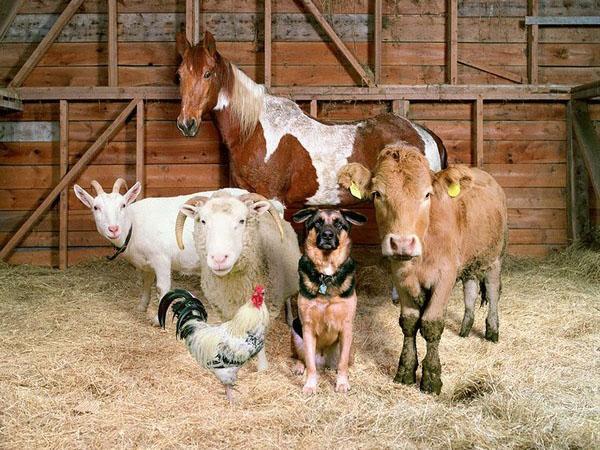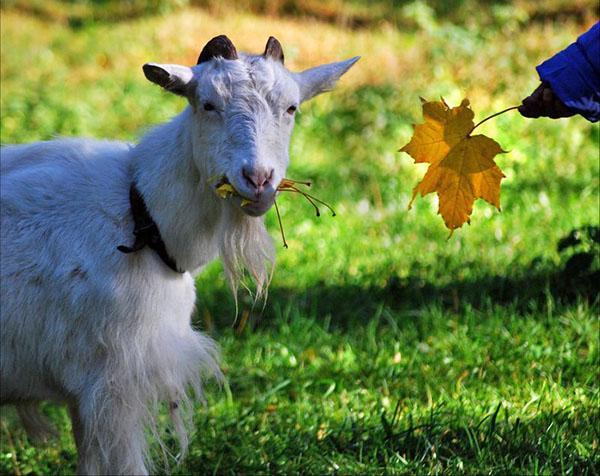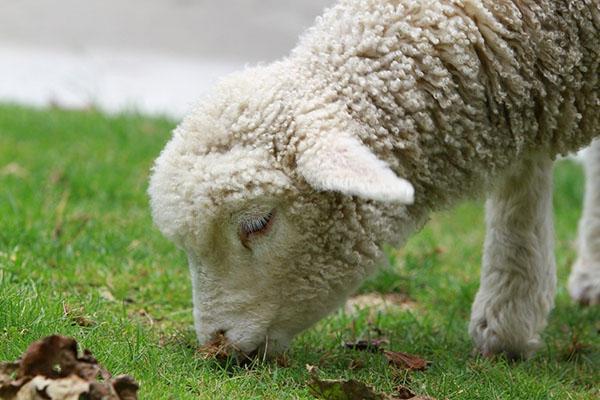Summer resident's calendar: November at the farm
 With the onset of autumn, the grass on the pastures becomes less and less. Livestock and poultry owners move their pets to the farmhouse and under the roof. Premises prepared for winter by the beginning of the stall period should be checked again and made sure that the animals are not threatened by rodents, drafts and leaks.
With the onset of autumn, the grass on the pastures becomes less and less. Livestock and poultry owners move their pets to the farmhouse and under the roof. Premises prepared for winter by the beginning of the stall period should be checked again and made sure that the animals are not threatened by rodents, drafts and leaks.
Since the duration of daylight hours in late autumn is reduced to 8 hours, lighting must be provided in goat houses, poultry houses and other structures, as well as equipment and material for replacing the litter must be prepared.
As soon as the animals occupy their winter "apartments", they immediately begin regular cleaning of stalls, cages, and corrals. New bedding material is added as needed. On fine days, goats, sheep, birds are allowed for walks.
Goats and sheep in the farm

If the farm has a breeder goat, he is provided with a high-calorie diet, including, among other things, grass hay, brooms, grain and succulent feed.
When equipping a goat's house, remember that each goat has its own drinking utensils. It is with warm swill that the meal begins in the cold season. Then the animals receive succulent food, rough ones finish feeding.
 Sheep breeders also have more trouble in the winter. In the middle of autumn, animals are scheduled for fattening and slaughter, which is usually carried out in December or January. The herd menu actively uses concentrates, kitchen waste, hay, the volume of which reaches 2 kg per adult ram, and juicy feed in the same amount.
Sheep breeders also have more trouble in the winter. In the middle of autumn, animals are scheduled for fattening and slaughter, which is usually carried out in December or January. The herd menu actively uses concentrates, kitchen waste, hay, the volume of which reaches 2 kg per adult ram, and juicy feed in the same amount.
Youngsters are offered less hay, but more silage and concentrates. Fodder and sugar beets will be a good help in feeding animals.
Rabbit keeping in November
 By late autumn, rabbits become quite well-fed, their skin is much better in quality than that of the summer generation. Therefore, slaughter is often carried out in November, which gives a double benefit. The skin of the killed animals is removed with a stocking. After that, its inner part is freed from fat. The skins are dried in a ventilated room at a temperature of 25-30 ° C.
By late autumn, rabbits become quite well-fed, their skin is much better in quality than that of the summer generation. Therefore, slaughter is often carried out in November, which gives a double benefit. The skin of the killed animals is removed with a stocking. After that, its inner part is freed from fat. The skins are dried in a ventilated room at a temperature of 25-30 ° C.
The rest of the livestock, before the cold weather, is transferred under sheds or indoors. As in the case of goats and sheep, changes are also taking place in the diet of the furry inhabitants of the farm. Grass hay stored in the summer is used, compound feedstored vegetables.
Until the last opportunity in the rabbit menu, juicy green dressings from the garden and from greenhouses are preserved.
Keeping poultry in the country house
 To keep the chickens active in poultry houses equip lighting. The lamps are hung about two meters above the floor. The duration of daylight hours for birds is gradually increased, reaching 10-12 hours per day. At the same time, the illumination above the feeders should be higher, and it is better to leave the nests for layers in the twilight.
To keep the chickens active in poultry houses equip lighting. The lamps are hung about two meters above the floor. The duration of daylight hours for birds is gradually increased, reaching 10-12 hours per day. At the same time, the illumination above the feeders should be higher, and it is better to leave the nests for layers in the twilight.
In cold weather, eggs are collected much more often than in summer. To prevent them from freezing, the poultry farmer will have to visit the nests every one and a half or two hours.
Poultry diets are also changing in the fall. The share of green forage is significantly reduced, whose place in the menu is occupied by wet mash and pre-chopped, steamed grass hay.
Needles help provide the body's needs for vitamins. Since autumn, it actively accumulates ascorbic acid, carotene and other bioactive substances. Collecting base and spruce needles begins in November. At the same time, they, the field of grinding, are included in the diet of the bird.
A daily portion of such a green delicacy weighs:
- for chickens about 10 grams;
- for ducks and turkeys about 15 grams;
- for geese up to 25 grams.
 To increase the nutritional value and digestibility of oats and barley, you can use germination. Chickens are fed more than half of such grain, and it is better to give seedlings in the morning. The daily meal is a mash with the inclusion of waste from the kitchen and other food. In the evening, the bird receives ordinary dry cereals. If possible, fresh greens are driven out for livestock until the very cold.
To increase the nutritional value and digestibility of oats and barley, you can use germination. Chickens are fed more than half of such grain, and it is better to give seedlings in the morning. The daily meal is a mash with the inclusion of waste from the kitchen and other food. In the evening, the bird receives ordinary dry cereals. If possible, fresh greens are driven out for livestock until the very cold.
Geese and turkeys tend to get fat in winter, so the bird is actively offered green grass hay. It is tied in small bunches and fixed next to the feeders. As long as the weather is good outside, chickens and other birds can walk. Therefore, you can feed the pets here. Outdoor drinking bowls during the cold season need to be updated frequently so that the water in them is not covered with an ice crust.